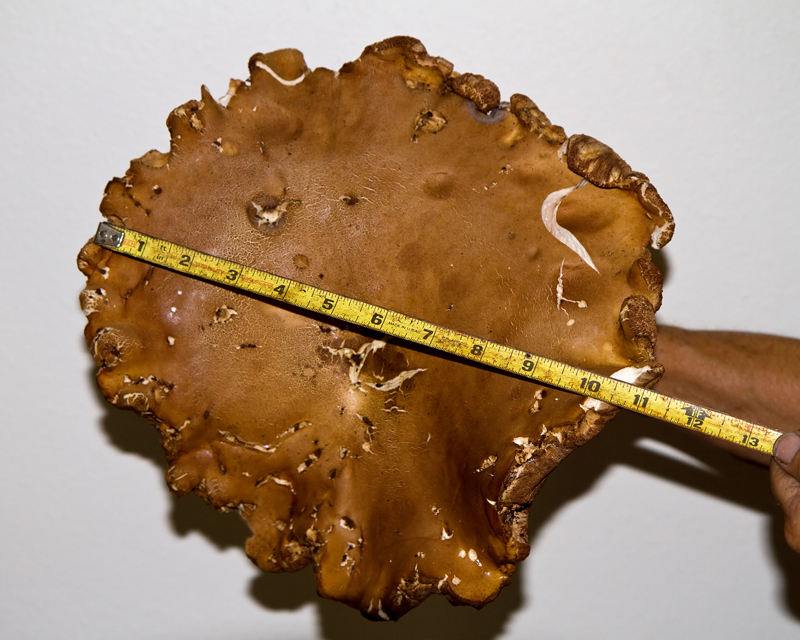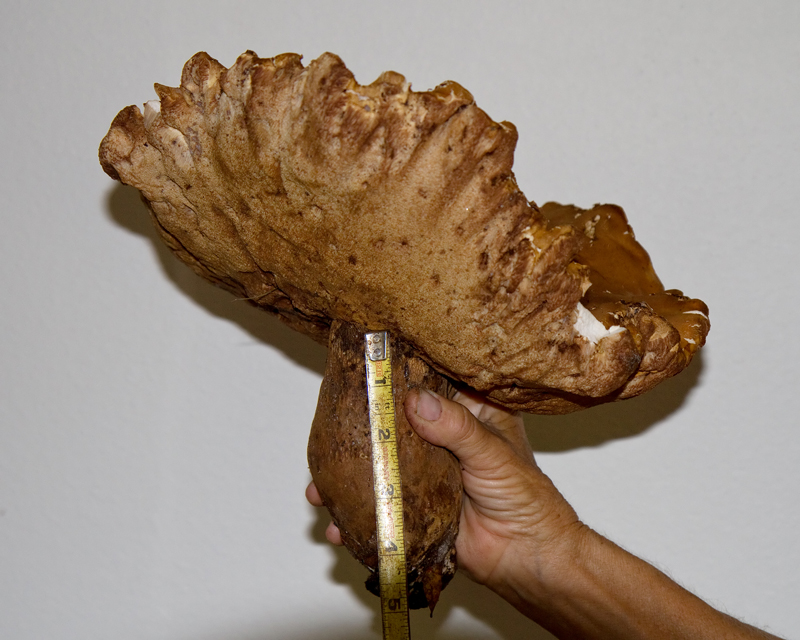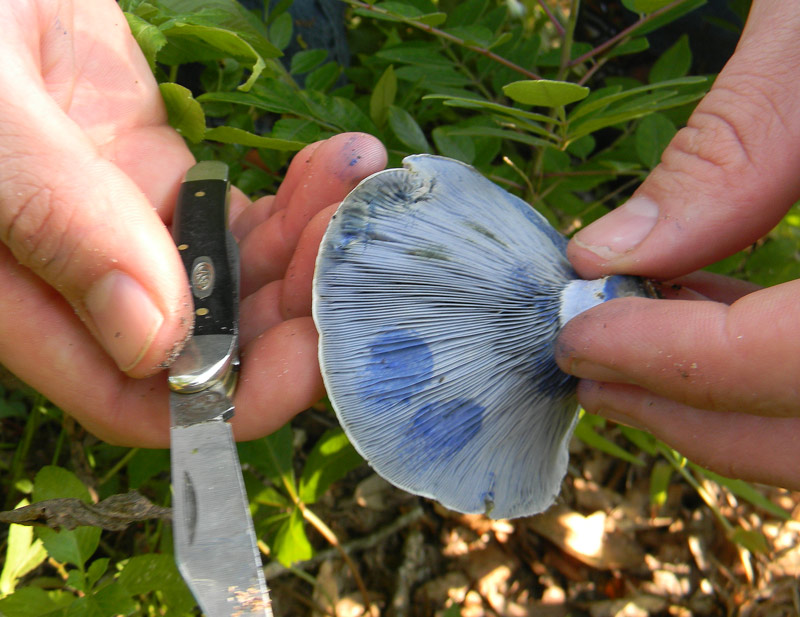J.C. found some giant Florida Bolete Mushrooms and wrote to tell me the tale:
Hi David,
That is a great article again this month in the AGRIMAG. Hiking around this AM I found this giant guy with 4 of his friends.

10 .5 inch cap diameter, up -turned cap, non-gilled. Looks good enough to eat. White flesh, slight musk odor when broken off a bit of the cap and non bleeder.
They were located on our farm in a small stand of big oaks. I am thinking boletes family but have not been able to get a positive ID.

What do you think?”
Those are definitely some giant boletes! What a marvelous find!
You can tell they’re boletes by the pores on the bottom of the cap. Unlike most of the mushrooms you’ll find, boletes have pores, not gills.
Is This Giant Bolete Safe To Eat?
As I’ve written before in my article on how to identify an edible bolete:
“1. Make Sure Your Bolete Doesn’t Stain Blue When Bruised
I know, this seems mean, but once you’ve found a bolete, cut into it or crush a corner. If the flesh rapidly stains blue, you may have an inedible type. Discard it unless you are an expert.
2. Make Sure Your Bolete DOES NOT Have Bright Red Or Yellow Pores
Some of the toxic boletes have brilliant red or yellow pores on the bottom. If your mushroom looks like that, there’s a good chance it’s not an edible bolete.”
So, after a few seconds of reflection, I must say I’d eat those giant boletes so fast you’d barely have time to say “garlic butter.”
Keep Watching for New Boletes!
The great thing about these mushrooms is that they’ll come back in that same location again and again as the weather induces fruiting. I used to walk a three-acre plot in my old neighborhood in the days after a heavy rain and hunt a variety of excellent mushrooms. I found some great stuff, including this amazing Lactarius indigo:

Mushrooms are just the reproductive portion of a larger organism beneath the earth.
Boletes, like many other mushrooms, often live in symbiotic harmony with certain species of trees. In this case, the boletes are living in a patch of oaks. They provide minerals to the tree roots and the trees provide them with sugars. Then, when the rainfall and temperatures are right, they produce mushrooms above the ground like the beautiful ones in J.C.’s photos.
Mushroom hunting doesn’t have to be terrifying. If you can ID some of the simple and safe types, you’ll have plenty of gourmet food. If you want to go deeper, you can, but I stick to the really easy ones like boletes, chanterelles, puffballs and a few others.
I’ve got a great library of mushroom books that have educated and inspired my shrooming over the years.
Check out my mushroom hunting book recommendations here and you’ll soon be eating like a king on gourmet fare you can’t buy at any price.
Some have said that Florida isn’t a great place for mushroom hunting. I disagree. I’ve found some great finds… and so have others, as J.C.’s giant Florida bolete mushrooms testify. Florida’s a great state!


2 comments
Hi, You are correct on the first two tests to eliminate emetic or otherwise sickening boletus, but I want to leave a caution for you. The first is that the characteristics we mycologists use to ID mushrooms apply only to fresh ones. This one is too old to be positive of it’s identity. Boletes often stop staining when they are in decline, and even a yellow spore surface can a change to a dull tan-brown like the one you have with age. But let’s say you want to risk it. Most boletus are nontoxic, but bitter. Once you’ve passed the first two tests, nibble a bit of the cap. Again, only fresh mushrooms in good condition.
Thank you very much.
Comments are closed.